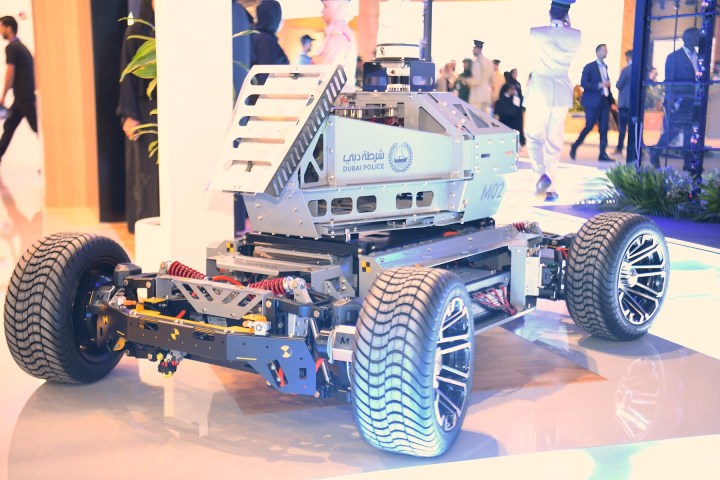
While U.S. firms like Waymo and Cruise focus on ridesharing services with their autonomous vehicles, the United Arab Emirates’ coastal city of Dubai is aiming to take the technology to another level by deploying it in police patrol cars.
Dubai Police recently announced plans to use fully electric, self-driving patrol cars in residential areas, local media reported this week.
The robocar’s battery allows it to patrol non-stop for up to 15 hours and features an advanced security camera with 360-degree coverage and facial recognition technology. It also has AI-powered smarts that help it spot suspicious behavior.
But don’t expect to see any high-speed chases if it needs to pursue a suspected criminal — the vehicle’s top speed is a mere 4.35 mph (7 kph).
If it does spot something that warrants further investigation, the self-driving car will send an alert to the Command and Control Center at Dubai Police’s General Operations Department, which can then organize a human response.
The vehicle, which was developed and built by 65 engineers over a period of five years, also comes with a camera-equipped drone capable of capturing aerial footage of a particular location.
“We have custom made the entire mechanical system of this vehicle,” Fareed Al Jawhari, a spokesperson for Micropolis Robotics, which designed the machine, told Khaleej Times. “Each wheel has an independent steering, braking, and throttle system. This means the vehicle can move forward, backward, or sideways, and even perform donut moves. When it moves, it is so silent that you can barely hear it.”
The autonomous police patrol car requires further testing but is expected to hit the streets by this time next year, according to Micropolis.
Dubai Police is known to favor high-tech solutions for its work. A few years ago it unveiled its first robocop, an admittedly low-spec contraption designed more for giving directions than chasing down robbers or solving complex crimes. It also has a fleet of supercars for getting around in style.
Dubai’s paramedics also have access to some flashy motors, while local firefighters have been equipped with water-powered jet packs that can be deployed from Jet Skis.
Editors' Recommendations
- Cruise woes prompt production halt of fully driverless van
- An autonomous car in San Francisco got stuck in wet concrete
- Apple’s rumored car could cost the same as a Tesla Model S
- Ex-Apple employee pleads guilty to nabbing Apple Car secrets
- A weird thing just happened with a fleet of autonomous cars


